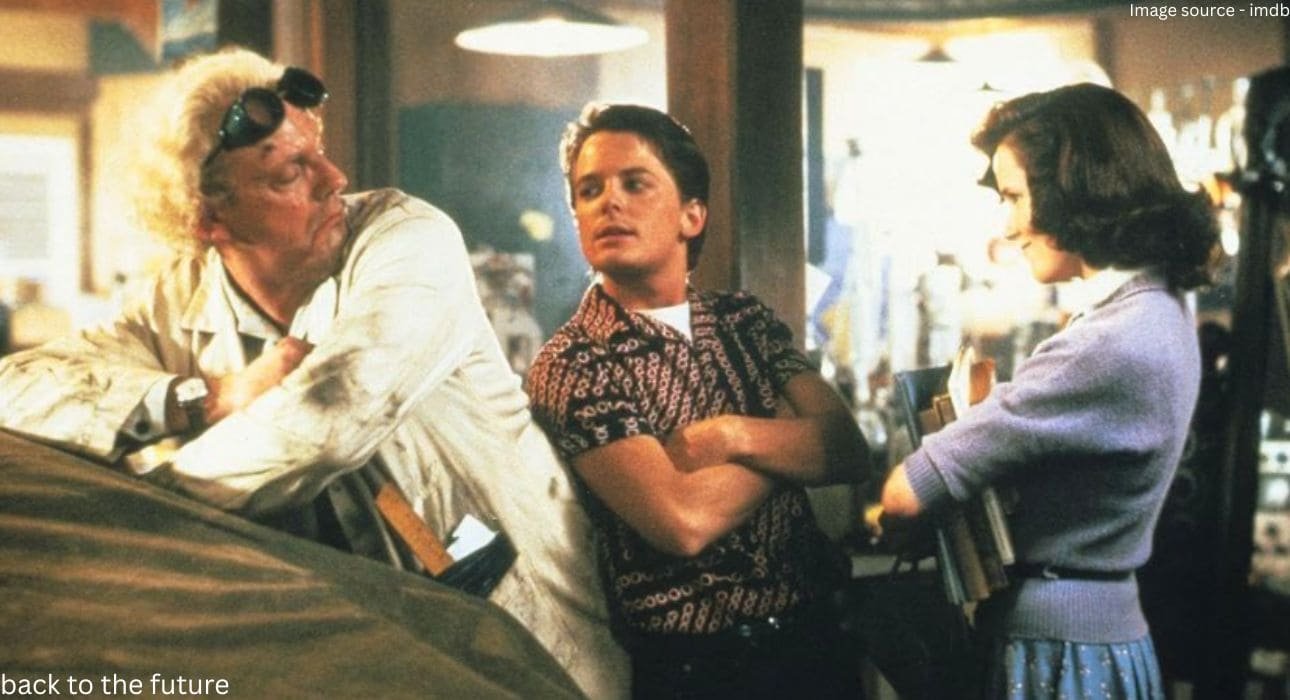From Greek tragedy to contemporary film, few psychological theories have generated as much fascination and Unease as Sigmund Freud’s Oedipus complex. Named after Sophocles’ tragic hero who unwittingly murdered his father and wedded his mother, Freud’s theory has gone on to shape literature, art, and particularly film. Whether by design or accident, Hollywood tends to mirror the Oedipal drama in its most effective, unsettling, or darkly comedic moments. The typical motifs of forbidden lust, parental competition, and identity crisis are so well-suited to the screen. This article examines how the Oedipus complex crept into some of the greatest movies in Hollywood history and why these topics remain so appealing to filmmakers and audiences alike.
The Oedipus Myth: A Brief Review
The play starts with a prophecy. Thebes’ prince Oedipus is doomed to slay his father and wed his mother. His parents, eager not to let things go this way, leave him behind. Yet fate prevails: Oedipus, unaware of the fact, carries out the prophecy, killing a stranger (his father) and marrying a queen (his mother). And when the fact is revealed, horror and destruction ensue.
Freud recognised in this story a universal drama: in early childhood, he contended, boys fall deeply in love with their mothers and feel unconscious rivalry with their fathers. This psychological triangle serves as a template for the construction of desire, repression, and identity.
Freud’s Oedipus Complex and Cinema
Freud’s Oedipus complex theory proposes that the unconscious is formed partly by childhood wishes and family relationships. Boys, especially, manage their love for their mother and competition with their father, feelings that are repressed and altered over time. For Freud, this repression forms the basis of adult personality and sexuality. Cinema, with its vivid visual and emotional narrative, is the perfect platform for depicting the unconscious.
Film directors have employed visual metaphors, character dynamics, and tension in narrative since the earliest days of cinema to depict repressed desires and conflicted family dynamics. Directors like Alfred Hitchcock, Darren Aronofsky, and Christopher Nolan tend to weave these dynamics into their films sometimes subtly, sometimes dramatically. The Oedipal story can be found in anything from thrillers to cartoons, dramas to comedies. The outcome? A genre-bending reflection of Freud’s most scandalous concepts.
Hollywood Movies That Echo the Oedipus Complex
Let’s look at some classic movies that represent, subvert, or spoof the Oedipal theme.

1. Psycho (1960) – Norman and His Mother
Alfred Hitchcock’s Psycho is a primer on psychological horror and a clear Oedipal drama. Norman Bates, the ostensibly mild-mannered owner of the motel, is under the psychological thumb of his mother… even in death. His shattered identity, profound guilt, and mother fixation lead to violence and madness.
Hitchcock did not set out to lecture viewers on Freud. Rather, he employed psychological motifs to create suspense and unease. As philosopher Constantine Sandis described it, Psycho works because it does not over-explain Norman’s pathology. It offers an over-the-top, ironic interpretation of Freudian psychology more to disturb than to teach.
2. The Lion King (1994) – Hamlet and the Oedipal Prince
Disney’s The Lion King is usually quoted as being an adaptation of Shakespeare’s Hamlet for children, yet it also features robust Oedipal undertones. Simba looks up to his father, Mufasa, and is guilty about his death, a typical emotional response in Freud’s framework. His battle with his “uncle” Scar (a warped paternal figure) and return to take back his identity replicates both royal succession and psychological individuation. Although The Lion King avoids maternal desire, it nevertheless stages a son’s passage through guilt, loss of identity, and eventual emotional maturity, typical concerns of both the Oedipal myth and Freudian theory.

3. Back to the Future (1985) – A Comedic Oedipal Twist
In Robert Zemeckis’s comedy about time travel, Marty McFly involuntarily goes back in time and encounters his mother during her adolescence; she, creepily, develops a crush on him. Although the movie addresses this Oedipal situation in a comedic, ridiculous way, it nevertheless presents the viewer with a core taboo: when son and mother encounter each other outside of their familial positions? The film cleverly uses this setup to depict Marty attempting to repel his mother while uniting his parents. In the process, he secures his future and solves the Oedipal triangle by reaffirming normative family roles.
4. Other Films: Oldboy, Black Swan, and American Beauty
Oldboy (2003): This South Korean revenge thriller presents a dark and literal Oedipus myth with a twist that is similar to the horror of Oedipus learning about his destiny.
Black Swan (2010): Darren Aronofsky’s psychological thriller is concerned with mother-daughter relations, suppressed desire, and identity fragmentation, similar to Freud’s ideas.
American Beauty (1999): The middle-aged hero’s lust for his daughter’s teenage buddy is not just a crisis of masculinity, but resonates with repressed Oedipal desires and fantasies of youth and freedom.
Why Hollywood Keeps Returning to Oedipus?
Why do filmmakers keep going back to these themes, directly or indirectly?
1. Cultural Fascination with Taboo
The taboo is attractive. The Oedipus complex addresses repressed, not forgotten, desires. Confronting them in fiction lets viewers deal with tough feelings like shame, guilt, love, and anger, without repercussions in real life. Taboo generates drama.
2. Family and Identity Are Universal
We all have families, and our parent relationships form us. The emotional depth of the parent-child relationship, particularly when tense, ruptured, or reversed, provides rich soil for narrative. It speaks to audiences with backgrounds everywhere.
3. The Unconscious Drives the Plot
Freud felt that a great deal of human action is driven by unconscious motivations. Filmmakers engage with this by presenting characters who do not know themselves, who are compelled by enigmatic urges or pursued by the past. The Oedipus complex is used as a means to investigate the discrepancy between who we believe we are and what is, in fact, beneath.
4. Repetition Compulsion and the Collective Unconscious
Psychologists like Carl Jung suggested that myths like Oedipus reflect archetypes in the collective unconscious. We’re drawn to certain patterns like the hero’s journey or the fall from innocence because they echo shared psychological truths. Hollywood, knowingly or not, recycles these patterns in new guises, satisfying a deep narrative hunger.
Criticism and Modern Interpretations
Of course, Freud’s theory has been subject to criticism particularly for being too male-centered and heteronormative. It is argued that it has no empirical foundation and tends to overreduce complicated familial relationships. Modern filmmakers tend to subvert or rework Oedipal themes:
In Coraline (2009), an adventurous girl faces a frightening “Other Mother” who provides limitless love, but at a horrific cost. Scholars such as David Rudd and Richard Gooding indicate that the film readies children for emotional independence, resonating with the psychoanalytic notion of transcending infantile dependence.
In The Babadook (2014), the mother’s loss and repression appear as a monster, probing maternal ambivalence and the haunting figure of the repressed Freudian concepts with a twist of gender. Psychology itself has changed. Contemporary theories focus on attachment styles, trauma, and intergenerational dynamics instead of repressed desire. But the emotional realities underlying the Oedipus complex, torn love, the difficulty of separating from one’s parents, and the search for identity remain strongly relevant.
Conclusion
Oedipus might be an ancient character, but he still haunts our screens. As tragic antiheroes, as comedic mishaps, or as animated metaphors, his influence tells us that stories about family, desire, and self-discovery are never merely stories. They’re emotional maps means of mapping the unconscious, of dramatising our inner struggles, and of coming to terms with who we are. As long as Hollywood is hungry for what drives us, what we hide, what we want, what we fear, Oedipus will never be out of the news.
Read More: Authors Who Used Sigmund Freud’s Theories in Their Writings
FAQs
1: What is the Oedipus complex, and how does it apply to films?
Answer: The Oedipus complex is Freud’s hypothesis that young boys feel unconscious desire for their mothers and competition with their fathers. Films regularly depict this dynamic, occasionally overtly, occasionally symbolically, through characters struggling with parent-child tension, identity crisis, or forbidden desires.
2: Which Hollywood movies illustrate Oedipal themes?
Answer: Movies such as Psycho (mother fixation), The Lion King (father-son rivalry), and Back to the Future (motherly desire) feature Oedipal themes. Others, such as Oldboy, Black Swan, and American Beauty, delve into similar psychological issues as well.
3: Is Freud’s Oedipus complex relevant today?
Answer: Although Freud’s theory has been heavily criticised, its fundamental concepts—family stress, stifled feelings, and unconscious wants remain valid today. Contemporary psychology presents other perspectives, but directors continue to deal with these age-old emotional dilemmas in new and innovative ways.
References +
- Allen, R. (1999). Psychoanalytic film theory. A companion to film theory, 123-45. Creed, B. (1998). Film and psychoanalysis. The Oxford guide to film studies, 86.
- Sandis, C. (2009). Hitchcock’s conscious use of Freud’s unconscious. Europe’s Journal of Psychology, 5(3). https://doi.org/10.5964/ejop.v5i3.255
- Lamiaa Ahmed, R., & Fatima M, A. K. (2022). Reading Traumatised and Depressed Women: A Cognitive Study of Marjane Satrapi’s Persepolis.
- Haning, A. G. W. (2022). THE REPRESENTATION OF EMOTION THROUGH INSIDE OUT MOVIE (PSYCHOANALYSIS STUDY).
- Buckley, C. G. (2015). Psychoanalysis, “Gothic” children’s literature, and the canonisation of Coraline. Children’s Literature Association Quarterly, 40(1), 58–79. https://doi.org/10.1353/chq.2015.0008













Leave feedback about this